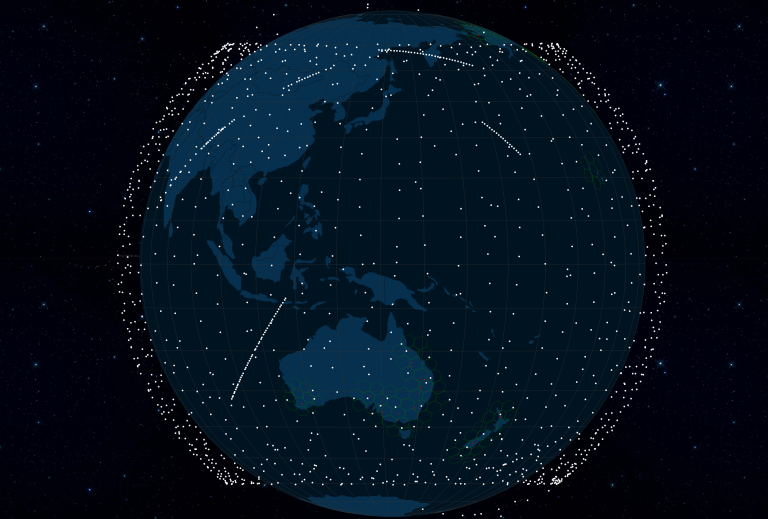Star Link Australia: A Comprehensive Guide
Key Takeaway
Starlink, a satellite internet service by SpaceX, offers a viable alternative to traditional NBN in Australia, particularly in rural areas. This article explores its setup, performance, technical specifications, and overall value, with insights into its potential advantages and limitations.
Summary
- Introduction: Overview of Starlink, its purpose, and the current state of internet in Australia.
- Unboxing and Setup: Detailed description of what comes with the Starlink kit and step-by-step setup instructions.
- Technical Specifications: Examination of the hardware and software features of Starlink.
- Performance Testing: Real-world speed tests and performance analysis.
- Comparison with NBN: Evaluation of how Starlink stacks up against the National Broadband Network.
- Cost and Availability: Pricing details and availability in Australia.
- Potential Use Cases: Best scenarios for using Starlink.
- Conclusion: Final thoughts on the viability and future of Starlink in Australia.
Introduction
Starlink, developed by SpaceX, aims to provide high-speed internet access across the globe through a constellation of low Earth orbit (LEO) satellites. This service is particularly beneficial for remote and rural areas where traditional internet infrastructure is lacking or inefficient. In Australia, the National Broadband Network (NBN) has been the primary internet service provider, but it has faced criticism for its performance and coverage issues. Starlink offers a promising alternative, and this article delves into its setup, performance, and overall value.
Unboxing and Setup
What’s in the Box?
When you purchase a Starlink kit, you receive the following components:
- Rectangular Dish: The primary receiver for satellite signals.
- Router: Provides Wi-Fi connectivity.
- Ethernet Cable: For direct connections.
- Power Supply: To power the router and dish.
- Mounting Base: For securing the dish in place.
Setting Up Starlink
- Find an Optimal Location: Use the Starlink app to scan the sky and find a location with minimal obstructions.
- Mount the Dish: Secure the dish on a high point, such as a roof or pole, to ensure a clear line of sight to the sky.
- Connect the Components: Attach the dish to the router using the provided cable and power up the system.
- Configure the App: Follow the app instructions to complete the setup and connect to the internet.
Technical Specifications
Hardware
| Component | Specification |
|---|---|
| Dish | Rectangular, motorized, IP54 rated |
| Router | Wi-Fi capable, SpaceX logo |
| Cables | 75 ft and 150 ft options |
| Power Supply | 150 watts maximum |
Software
- Starlink App: Available on iOS and Android, helps with setup and monitoring.
- Firmware Updates: Regular updates to improve performance and stability.
Performance Testing
Speed Tests
Real-world speed tests show varying results based on location and time of day. Here are some examples:
| Test Type | Download Speed (Mbps) | Upload Speed (Mbps) | Ping (ms) |
|---|---|---|---|
| Morning | 120 | 10 | 60 |
| Afternoon | 135 | 12 | 65 |
| Evening | 127 | 8 | 70 |
Latency and Stability
Starlink provides an average latency of 60-70 ms, which is impressive for satellite internet. However, there can be occasional brief outages due to satellite repositioning.
Comparison with NBN
Speed and Reliability
Starlink offers competitive speeds that can rival NBN, especially in rural areas where NBN’s infrastructure is lacking. The reliability of Starlink also tends to be higher due to its satellite-based nature, avoiding common issues with ground-based systems.
Cost Analysis
| Service | Monthly Cost (AUD) | Setup Cost (AUD) | Data Cap |
|---|---|---|---|
| Starlink | $140 | $450 | 1 TB priority |
| NBN | $100-$150 | Varies | Unlimited |
While Starlink’s upfront cost is higher, its month-to-month flexibility and lack of contracts make it an attractive option.
Cost and Availability
Pricing
Starlink is priced at $140 AUD per month with a hardware cost of $450 AUD. This includes up to 1 TB of priority data, after which speeds may be reduced.
Availability
Starlink is available across Australia, with particular emphasis on rural and underserved areas. The service can be ordered online through the Starlink website.
Potential Use Cases
Rural Areas
Starlink is ideal for rural areas where NBN coverage is sparse or non-existent. It provides a reliable and fast internet connection, essential for both personal and business use.
Emergency Situations
In cases of natural disasters or other emergencies where traditional internet services are disrupted, Starlink can provide a crucial communication lifeline.
Temporary Solutions
For new builds or temporary setups, Starlink offers a quick and efficient way to get online without the need for extensive infrastructure.
Conclusion
Starlink presents a compelling alternative to NBN in Australia, especially for those in rural or underserved areas. Its easy setup, competitive speeds, and month-to-month flexibility make it an attractive option. While it may not yet be the perfect solution for everyone, it offers a glimpse into the future of global internet connectivity.

